Antonyms Teaching Resources
Are you teaching antonyms this school year? Printable worksheets, digital activities, and more options for the English teacher have been created just for you by the Teach Starter teacher team!
Explore a curriculum-aligned teaching resource collection full of options for your writing or reading rotations with editable options to help differentiate instruction for your individual students.
Has it been a while since you were teaching this part of the English curriculum? Our teacher team knows what it’s like to suddenly teach a brand-new grade level after years away, so we’ve put together a quick refresher on antonyms! Read on for a guide on the meaning of antonym, how we use antonyms, and even how to pronounce this tricky word!
Definition of Antonym for Kids
The obvious place to start teaching this topic is with an antomy definition, isn't it? Your students will need to know what an antonym is and how it differs from a synonym. Put in the most simple terms that kids can understand, an antonym is a word that means the opposite of another word.
For example, 'tall' is the antonym of 'short' because the words mean the opposite of one another.
What Is an Antonym?
Let's dig a little deeper than that definition and take a look at what an antonym actually is and does in written texts.
Typically adjectives or adverbs, these words are valuable for young writers to learn as they help us describe things more precisely and increase our vocabulary.
Alongside learning about synonyms, teaching students about this type of vocabulary word also helps them as they begin to compare and contrast things. After all, when we know that something is not like something else, it helps us identify what that thing is!
How Do You Pronounce Antonym?
Are your students' tongues tripping over the pronunciation of this word? Have them slow down their speech and try breaking it up into three sounds — [AN] + [TUH] + [NIM].
Antonym Examples for Kids
Using examples can help your students start to grasp the concept of how to use these words in their own writing. Here are some fun examples of antonyms that kids always love:
- Lazy — Active
- Boring — Fun
- Yummy — Yucky
5 Types of Antonyms
It may be a fairly simple thing to explain that two words with opposite meanings fit into the antonym category, but we would be remiss if we didn't address that there are various types! Understanding the way these break down can help students better understand how to use words effectively to convey their intended meaning.
The five types of antonyms our students work with are:
Gradable antonyms
These are antonyms that represent opposite ends of a spectrum and can be used to describe different degrees of a quality. Some examples include:
- Hot and cold
- Tall and short
- Big and small
- Fast and slow
- Young and old
Complementary antonyms
This type of antonym represents a binary relationship where the presence of one implies the absence of the other. In other (more kid-friendly) terms, they're opposites but they work together to describe the same thing. For example, 'on' and 'off' are complementary antonyms. If you want to describe a light switch, you might say 'turn the light on' or 'turn the light off.' Both sentences include antonyms to describe the same action.
Some examples include:
- Alive and dead
- Male and female
- On and off
- Push and pull
- Day and night
Complementary antonyms are helpful because they give us a complete picture of something by showing us both sides of it. It's like having two puzzle pieces that fit together perfectly to make a complete picture.
Relational antonyms
This type of antonym helps us to describe a relationship between two concepts. Some examples include:
- Parent and child
- Teacher and student
- Borrower and lender
- Employer and employee
Auto-antonyms
These are words that can be very confusing to kids. That's because these words are technically the same, but they have opposite meanings depending on the context in which they are used. Some examples include:
- Cleaved (to stick together) and cleaved (to split apart)
- Sanction (to permit) and sanction (to punish)
- Dust (to remove dust) and dust (to add dust)
- Oversight (to supervise) and oversight (a mistake)
Converse antonyms
Our final type on this list is a set of words that describe the relationship between two concepts where one concept implies the other. Some examples include:
- Buy and sell
- Borrow and lend
- Teach and learn
- Above and below
Fun Antonym Activities for Kids
Teaching antonyms can be exciting, fun, and engaging if you use the right resources, but it can be boring, dull, and tedious if you don't get it right (see what we did there?!). This collection of antonym activities for kids is stocked with ideas to make sure your antonym lessons are the former:
- Antonym games
- Synonyms and antonyms worksheets
- Antonym matching activities
- Antonym posters
- Antonym anchor charts
- Google Interactive antonym activities
- Antonym flashcards
- Thesaurus skills
- And more!
- Plus Plan

Antonyms Puzzle Activity
Print a set of 18 antonym puzzles to practise using opposite words.
- Plus Plan
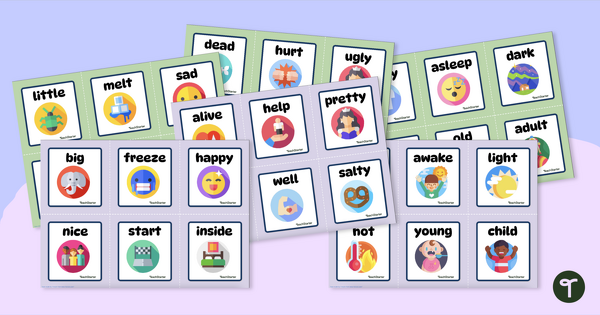
Antonym Flashcards
Boost your students vocabulary skills with a set of illustrated antonym flash cards.
- Plus Plan
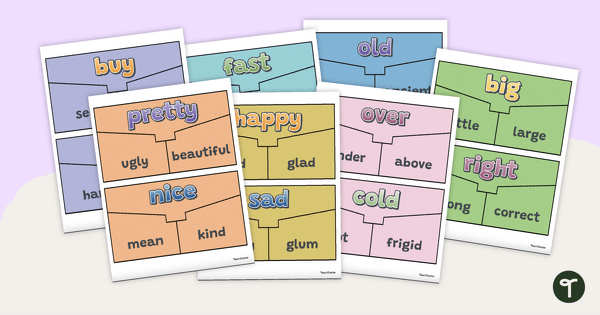
Synonyms and Antonyms - Printable Puzzles
Turn your language learners into vocabulary superstars with a fun synonym and antonym puzzle activity.
- Plus Plan

Antonym Worksheets - Middle Primary
Practise identifying and using antonyms with a set of worksheets for students in Year 3 and Year 4.
- Plus Plan
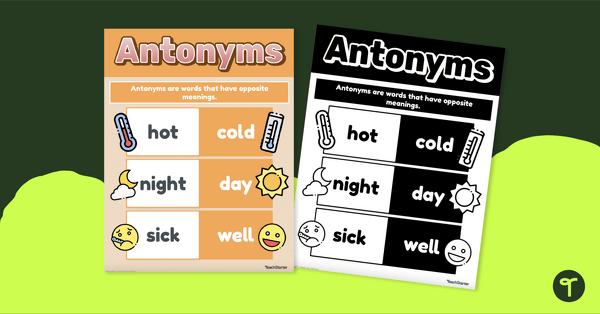
Antonym Poster
A poster showing the definition and examples of antonyms.
- Plus Plan
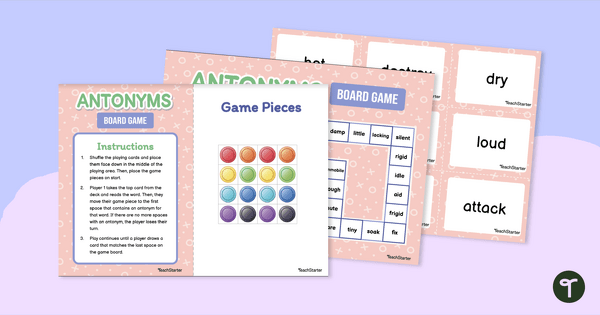
Antonyms Board Game
Read 18 words and identify their antonyms as you race players to the end of the game board.
- Plus Plan
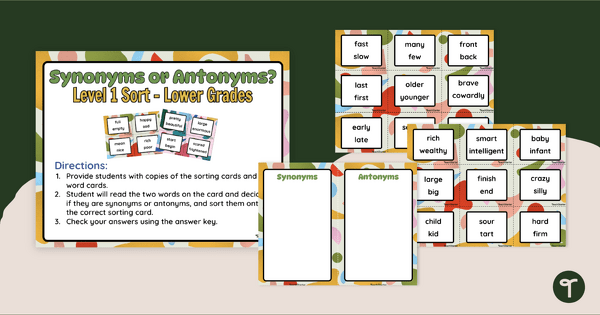
Synonyms and Antonyms Sorting Activity
Practise identification of synonyms and antonyms with a sorting activity.
- Plus Plan
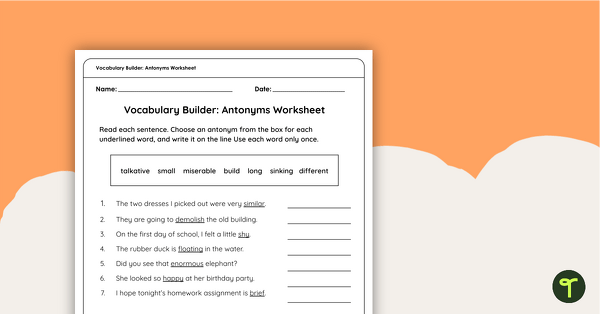
Vocabulary Builder - Antonyms Worksheet
Practise using antonyms in context with a printable vocabulary-building antonyms worksheet.
- Plus Plan
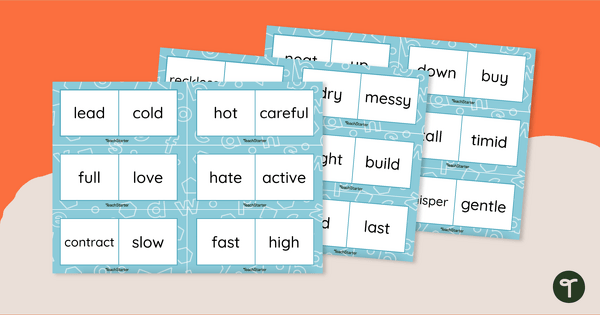
Antonym Domino Game
Have some wordplay fun with an Antonym Domino game!
- Plus Plan

Antonym Worksheets - Year 4
Practise identifying and using antonyms with a set of four synonym worksheets for year 4 students.
- Plus Plan
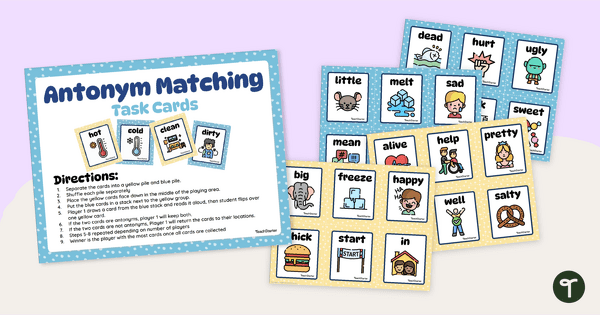
Antonym Match Up Activity
Match sets of antonyms and build vocabulary with an antonym matching game.
- Plus Plan
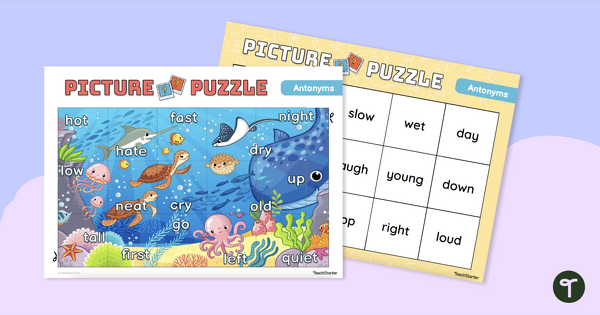
Antonyms Picture Puzzle - Opposite Words
Practise identifying and using antonyms with this 15-piece under-the-sea picture antonyms puzzle.
- Plus Plan
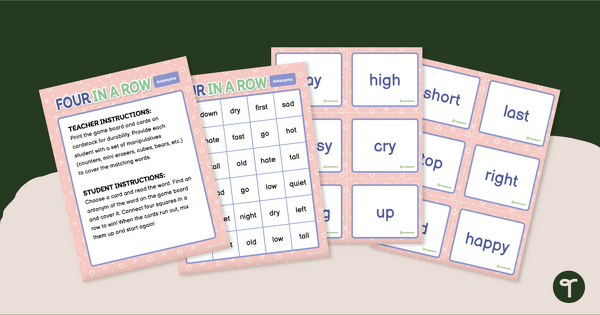
Four in a Row — Opposite Word Game
Practise identifying and using antonyms with a Four in-a Row Antonym Game!
- Plus Plan
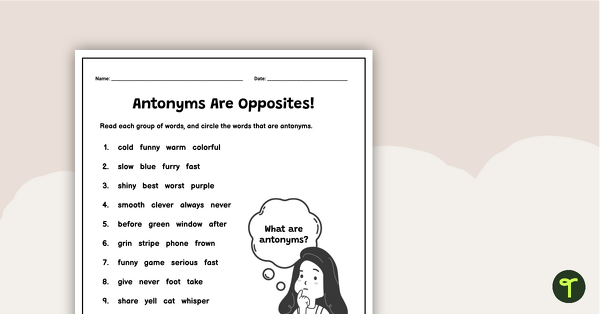
Antonyms Are Opposites! – Worksheet
A worksheet to practise identifying antonyms.
- Plus Plan
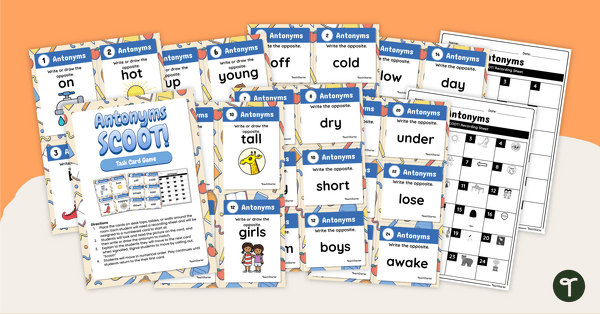
Antonyms - SCOOT! Task Cards
Build vocabulary and recognition of antonyms with a fun game of SCOOT!
- Plus Plan
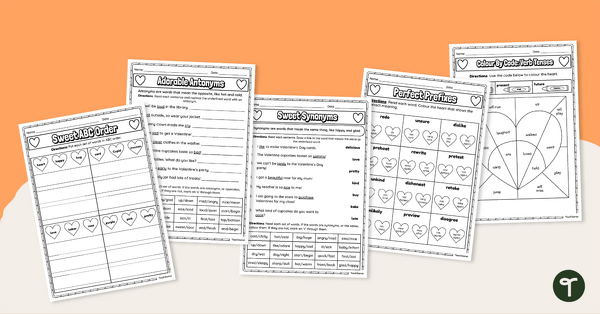
Valentine's Day Grammar Worksheets
Review and practise a wide range of grammar skills with a pack of printable Valentine’s Day Grammar Worksheets.
- Plus Plan

Antonyms Polygon Puzzle
Match antonym pairs with an engaging opposite words tarsia puzzle.